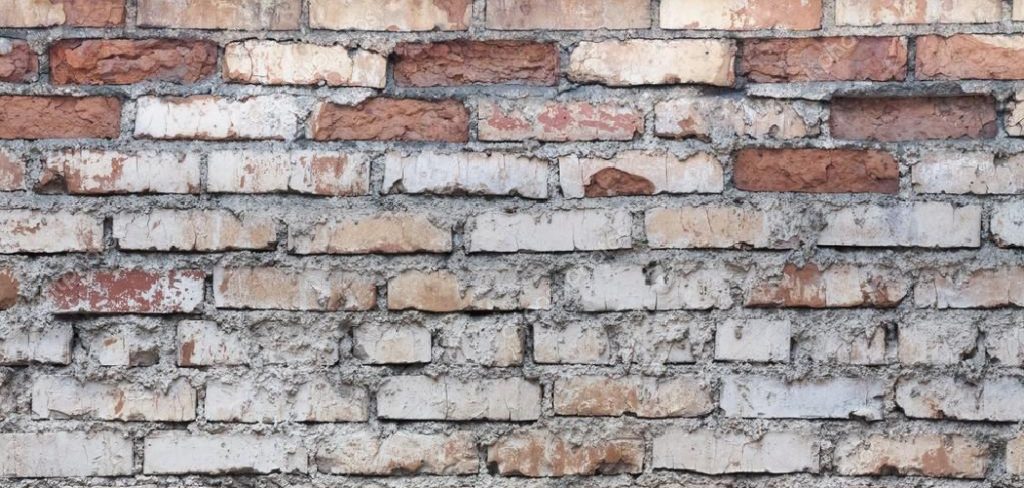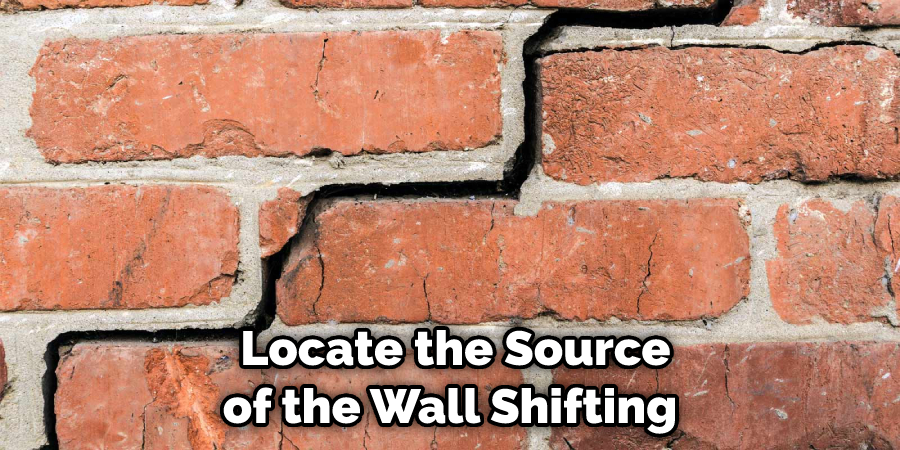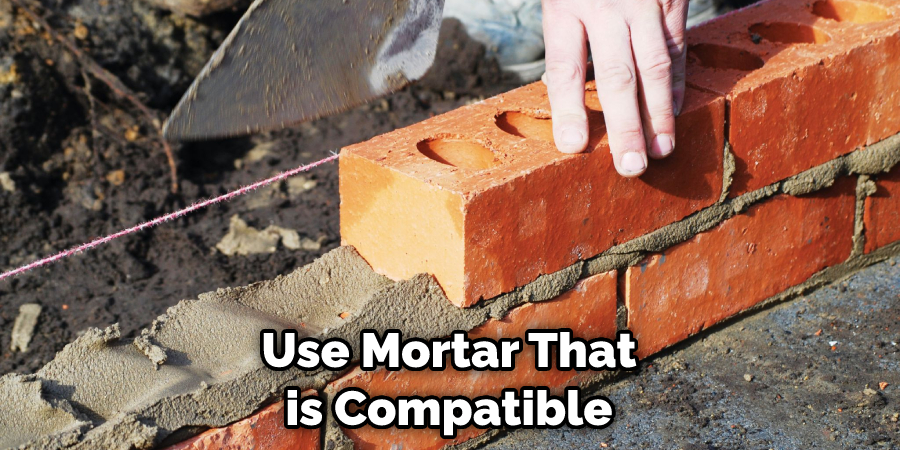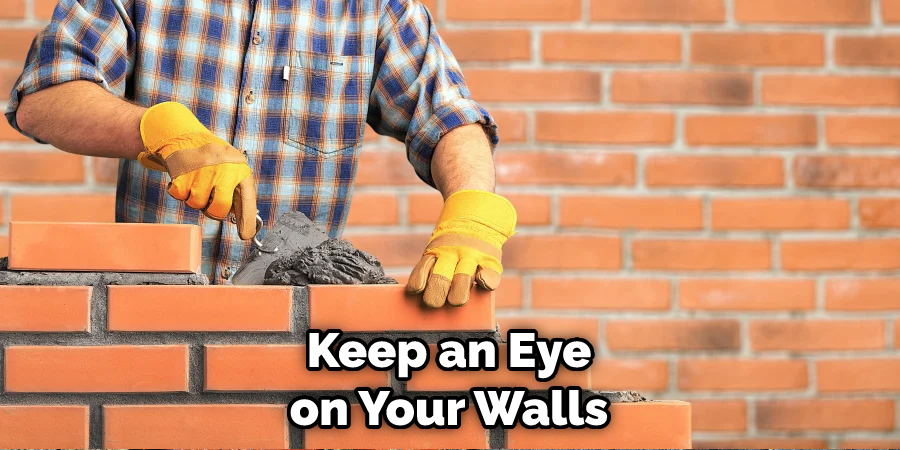If a brick wall has shifted, it is important to repair it as soon as possible. If left untended, the bricks can become loose and even begin to collapse. Additionally, water can damage the mortar joints between the brick and cause further damage. Repairing a brick wall that has shifted is an important maintenance measure to ensure its structural integrity and longevity.

The advantages of repairing brick walls that have shifted are numerous. First and foremost, it can prevent further damage to the wall before it becomes too severe. Additionally, repairing a shifted brick wall will ensure the structural integrity of the entire building and reduce any potential water or other weather damage from occurring in the future.
Furthermore, repairing a shifted brick wall is much less expensive than having to replace the entire wall. In this blog post, You will learn in detail how to repair brick wall that has shifted.
What Are the Common Causes of Shifting in a Brick Wall?
The most common causes of a shifting brick wall are foundation settling and seismic activity. Foundation settling results from erosion, insufficient soil compaction during the original construction, or poor drainage. Seismic activity can be caused by an earthquake or other geological shifts in the earth’s surface. Both foundation settling and seismic activity can cause bricks to become loose and walls to shift.
Step by Step Processes for How to Repair Brick Wall That Has Shifted
Step 1: Inspect Your Area
Inspect the area around the wall to determine what repairs need to be made and where once the inspection is complete, clear away any debris from the area around the wall that could obstruct your work.
Step 2: Locate the Source of the Wall Shifting
Once the area is clear, locate the source of the wall shifting. There could be several factors that are causing it to shift, such as soil erosion/expansion and foundation settling. In some cases, there may also be damage caused by tree roots or a lack of mortar in the wall.

If you are unsure of the cause, it is recommended that you consult with a professional to determine the best course of action. This will ensure that your repair job will be done correctly and your wall will remain structurally sound.
Step 3: Repair the Underlying Problem
Once the source of the shifting has been determined, you can then take steps to repair it. This could mean replacing soil or compacting it with a tamper, repointing mortar joints, or solving any problems caused by tree roots.
Depending on the shifting source, you may need to install an anchor system to keep the wall from shifting again. Anchor systems come in various styles and materials, including brick ties and expanding anchors.
Step 4: Remove Loose Bricks or Blocks
If any bricks or blocks have become loose due to shifting, you will need to remove them and replace them with new ones. Carefully remove the old bricks or blocks and clean up any debris from the area. Once the area is clear, you can then reinstall new bricks or blocks in their place. Use a trowel to spread mortar between the blocks and ensure that they are correctly laid in order.
Step 5: Add Mortar and Fill Gaps
Fill any gaps or cracks with mortar, making sure to use enough for a strong bond. Give each joint plenty of time to cure before proceeding to the next step. Once the mortar has cured, it is important to apply a protective sealant to prevent further water damage. This will help keep your wall looking and functioning like new.
Step 6: Re-inspect the Wall
Finally, inspect the wall once more to ensure the repair job has been done correctly. If everything looks good, you can be confident that your wall is once again stable and secure.
By following these steps, you can successfully repair a brick wall that has shifted and ensure it remains structurally sound for many years to come.
5 Precautions for How to Repair Brick Wall That Has Shifted

- When performing any kind of brick wall repair, you must wear safety glasses and gloves. Make sure also to wear a dust mask if working with masonry materials that may produce airborne particles or dust.
- If you are repairing a high brick wall, use scaffolding to ensure your safety. Make sure the structure is stable and can support your weight before climbing up and beginning the repair.
- If a brick wall has shifted, it can be safely braced from behind with steel supports or lintels. This will provide extra stability while you are making the necessary repairs.
- Before repairing a shifted brick wall, make sure to check for any underlying structural problems that may need to be addressed first. This could include checking for foundation cracks or damage caused by water infiltration.
- When selecting bricks and other materials to be used in brick wall repair, ensure they are of the highest quality and appropriate for the job. Inspect each item before use to ensure that it is free from any defects or damage. Use a masonry adhesive if necessary.
Following the proper safety procedures and using high-quality materials will help you achieve professional results and ensure your ongoing safety when performing any kind of masonry work.
How Long Should the Repairs Take?
Repairing a brick wall that has shifted can vary in time depending on the size of the job. Generally, an experienced professional mason can repair a small area within one or two days; however, larger areas may take up to several weeks to complete. Generally speaking, it is best to expect repairs of any magnitude to take a minimum of three days to complete.
When it comes to the tools necessary for repair, a grinder or circular saw is often used to cut away any loose bricks and mortar from the surface; a hammer, chisel, and line level will also be needed when reinstalling new bricks and mortar. Additionally, an air compressor and air gun may be necessary if the job requires replacing any damaged pieces of brick.
How Can You Ensure That Your Brick Wall Remains Stable Once It is Repaired?
Once the brick wall is repaired, there are a few steps to ensure that it remains stable. First, ensure that the wall’s foundation is properly supported, so it doesn’t shift and cause further damage. If you have access to below-grade levels, be sure to check for water leaks or other drainage issues and repair them as necessary. Additionally, be sure to clear any debris from the base of the wall and any adjacent walkways.
Also, it’s important to use mortar that is compatible with the type of brick used in your wall. It’s also beneficial to repoint weakened joints or damaged bricks when necessary. Ensure that each brick is securely and properly aligned so it won’t shift when put in place.

How Much Will It Cost to Repair a Brick Wall That Has Shifted?
The cost of repairing a brick wall that has shifted depends on the extent of the damage, how much labor is needed, and the materials being used to make the repairs. If you are dealing with minor shifting or cracking, it may be possible to repair your brick wall using a mortar and other supplies. However, larger-scale repairs may require professional help and will likely cost more.
If you need to replace bricks that have shifted, the cost of supplies needed to do so can range from $5-$15 per brick. On top of that, if any extra repair work is needed (such as re-pointing or stabilizing the wall), you may need to hire a professional mason to complete the job. Professional labor costs can range from $25-$45 per hour.
How Can You Prevent Future Shifting in Your Brick Wall?
Once you have finished repairing your brick wall, it’s important to take steps to prevent future shifting. Here are a few tips:
- Install drainage systems to reduce water pressure behind the walls. These can be done with French drains or an exterior system of pipes to divert water away from the bricks.
- Make sure to fill any cracks in the mortar or brick joints with a masonry caulk designed for brick walls. This will help keep moisture from seeping into the wall and causing it to shift.
- If possible, install seismic straps or anchors on your walls to help keep them steady during an earthquake.
- Make sure to keep an eye on your walls for any changes and have them professionally inspected ever so often.

By following these tips, you can help ensure that your brick wall stays in place and that you won’t need to worry about repairing it again should it shift. Keeping up with maintenance on your brick walls will ensure that they last for many years to come.
You Can Check It Out Fix Pocket Door Off Track Without Opening Wall
Conclusion
The main disadvantage of repairing a brick wall that has shifted is the amount of time and labor involved. A brick wall can be difficult to repair correctly, requiring special techniques and tools. To conclude, repairing a brick wall that has shifted can be a tricky and time-consuming process that requires some knowledge and the right tools to do the job correctly.
However, it is possible to repair a brick wall with patience and proper preparation. Once you’ve identified the cause, you can then fix it by replacing damaged bricks, adding additional support to weak areas of the wall, or filling in joints with new mortar. I hope this article has been beneficial in learning how to repair brick wall that has shifted. Make Sure the precautionary measures are followed chronologically.
